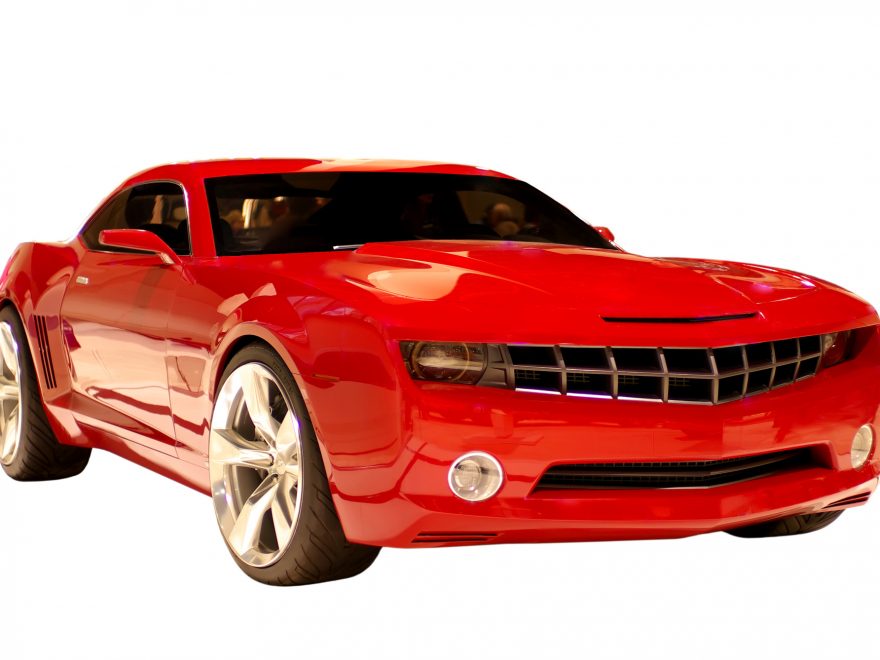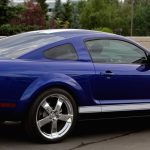Who doesn’t love Bumblebee? That mini transformer who’s the youngest and bravest of the Autobot bunch. He’s up for any challenge that his leader, Optimus Prime, throws his way.
But the best part about Bumblebee is his auto form. In the Transformer movie series, Bumblebee begins life as a 1977 Chevrolet Camaro.
He goes through some upgrades throughout the film series. The color and model of the Camaro change over time. But Bumblebee is always a Camaro in the newest live-action films.
If you’re a Camaro lover like we are, you appreciate the cinematic nod to this classic vehicle. The Chevrolet Camaro has a long and colorful history as one of America’s most recognizable sports cars.
Find Your Online Car Repair Manual Today! ->>
Read on to learn all about Chevy Camaro history.
The Chevrolet Motor Company
The story of the Camaro starts with its namesake company: Chevrolet.
The Chevrolet Motor Company incorporated in November 1911 by William Durant. Durant had been the original founder of General Motors (GM) but was ousted by the board.
In an effort to get back into the auto game, Durant brought on a retired racer named Louis Chevrolet. He set Chevrolet up with a shop in Detroit and together they started producing vehicles.
Not long after, Louis left Chevrolet to return to racing. Durant had his eye on GM.
He started buying up GM stock in an effort to gain a controlling interest. This plan worked and through a reverse merger, the two companies became one.
Chevrolet actually bought GM, not the other way around.
The Need to Compete With the Mustang
In the mid-1960’s, Chevrolet had a problem. The wildly-popular Ford Mustang was blazing through the auto market.
The Mustang was originally released in 1962 but hit real success with the 1965 model. It became Ford’s most successful vehicle launch since the Model A.
Chevrolet’s answer? The Camaro, released in September 1966.
The 1967 Camaro came in two models: the coupe and the convertible. Both models had two doors, seating for four, and had that classic sports car look made popular by the Mustang.
The base engine of the original Camaro was a 140 horsepower, six-cylinder engine. Upgrade options were available to either 5.7L or 6.2L V8 styles.
Camaro had two body style upgrades. The Rally Sport (RS) style offered interior upgrades and hidden headlights. The Super Sport (SS) featured a heavier suspension and bumblebee stripes along the nose.
Customers could also combine the two upgrade packages and get the RS/SS model, the highest quality model available.
As a racing alternative, there was the iconic Z28 model introduced in 1966. The Z28 featured a larger V8 engine that pulled 290 horsepower. It also had a more rugged suspension designed to rev.
It’s All In the Name
To name their new sports car, the GM guys wrote down over 2,000 words that started with “C”. At that point, all of the popular Chevrolet car models started with “C” and they intended to continue that trend.
The word Camaro stuck out. Not for any good reason other than it sounded cool.
They cited a dictionary definition that Camaro meant “friend.” After competitors claimed it had other strange meanings, Chevrolet opted to throw out an iconic definition.
“The Camaro is a small, vicious animal that eats Mustangs.”
With that, the Camaro name lives on as one of the coolest auto names in history.
Second Generation
The original Camaro underwent some minor changes throughout the late ’60’s. Side marker lights added to match government regulation. Window orientation, grille, and taillights were all tweaked.
Unfortunately, sales dropped for the Camaro in the years immediately following its release. That paved the way for a second generation redesign.
The new model had a more European feel, loosely based on the Ferraris of the time. It featured the iconic long hood, but it was now slanted down versus the flat hood of the ’60’s.
Customers could still opt for the RS and SS upgrades and the Z28 was still available as well. All the Camaros now had a built-in spoiler that helped with downforce. And the headlights rounded and bulged from the body.
Another notable change was that the convertible option discontinued, leaving only the two-door, four-seat coupe.
The gas shortages of the ’70’s affected the power of the Camaro line. Eventually, Chevrolet had to drop power to accommodate better fuel efficiency.
Over the first five years of its life, the Camaro gained a strong following. This helped keep Chevrolet in the sports car game. Even when they experienced worker strikes at one of their largest plants.
As the ’70’s came to a close, the Camaro remained largely unchanged. There were minor adjustments to the bumper and the engine size throughout the end of the decade.
They also made more of an effort to improve the interior of the vehicle with additions like air conditioning and power windows. GM added the T-top design that had two removable glass panels.
But the way was now paved for a third generation giving a modern ’80’s upgrade to the classic car.
Third Generation
In 1982, aerodynamic was the name of the game. GM engineered the newest version of the Camaro to maximize its shape. The new body was boxier and trimmed up.
The body weighed 500 lbs less than its second-gen predecessor. And it had square, inset headlights, a cut bumper, and sloped hood.
It’s a good thing that GM gave the new Camaro a trimmed up package. The standard engine was a small, 2.5L four-cylinder motor that produced just 90 horsepower. Larger, more powerful engines were available, but for a price.
The overall look of the third-gen Camaros was more modern and clean. During the ’80’s, GM added standard fuel injection and upgraded the dash. The first digital mileage counters were added during this decade.
In 1985, the International Race of Champions chose the Camaro as its race car. This was big news for Camaro fans. GM released the IROC-Z model that year.
The new model included an updated body, bigger wheels, and a 215 horsepower engine.
The IROC-Z model was made between 1985-1990 when Dodge took over the International Race of Champions. Chevy no longer held the rights to the name. IROC models are some of the most popular for collectors.
1992 was the final year for the third-gen models. It was also the 25th anniversary of the Camaro. And every 1992 Camaro has an anniversary badge on it to commemorate.
Fourth Generation
The fourth-gen premiered in 1993 and featured a sleeker, less boxy look. It was streamlined with a smooth, sloped hood. The T-top remained popular with this new look.
1994 saw the return of the convertible Camaro. The new Camaros were bigger but also heavier than the light models of the ’80’s. All came standard with a V6 engine, upgradeable to a V8.
The appearance was unchanged throughout the ’90’s except for a revamp of the grille. The front of the car was rounded out and the boxy body of the ’80’s completely disappeared.
There were also some tweaks to the engines throughout the ’90’s. Engines became more powerful as GM introduced elements of their Corvette under the hood of the Camaros. The most powerful Camaro of the mid-1980’s couldn’t hold a candle to the fourth-gen models.
In 1997, the car celebrated its 30th anniversary with a white and orange paint job and special houndstooth interior.
The turn of the new century did not bode well for the Camaro. Sales slumped to all-time lows. The 2002 model was sent off with a 35th-anniversary graphics package.
Chevy Camaro History: Retired and Reborn
With the drop in sales, GM retired the Camaro in 2003 after 35 years of production. Fortunately for enthusiasts, the company picked up new design ideas in 2005 and began a rework.
Ford continued to do well with the Mustang and Chevy wanted to match that. In 2010, the 5th generation of Camaros rolled off the line.
Many enthusiasts considered the latest models to be the best ones to date. The reborn model took its inspiration from the 1969 Camaro.
It had a flat hood and flatter, boxier front grille. Although not completely the same because it sported a larger back end.
The new Camaros offered standard 304 horsepower, 3.6L V6 engines. Customers could upgrade to a 6.2L V8 that boasted 426 horsepower.
In 2013, Chevy unveiled a wildly popular convertible version. Get 2013 Camaro parts here. The Z28 made its re-debut in 2014 to significant fanfare.
The Latest Version
In 2015, the Camaro was reborn once again. The latest version, the 6th generation, features a rounded front end and sleeker body design.
Most of its components are special to the Camaro, shared with no other GM models. In 2016, the new Camaro was named Motor Trend’s Car of the Year.
There are three engine models available with varying speed and size. The newest packages are more aerodynamic and lighter than previous versions.
The Future is Bright
The Camaro is a classic American sports car. Over the years, it has undergone six fundamental changes in body shape and engine design.
It’s seen it through the fuel crisis of the ’70’s and the power shortage of the ’80’s. The Chevy Camaro history includes its retirement to its eventual re-introduction. And the future is bright for this legendary car.
Are you a Camaro enthusiast? Make sure you keep your car in the best shape with our car repair tips.
Check out our online service repair manuals for all you need to know about repairing Chevy vehicles.







